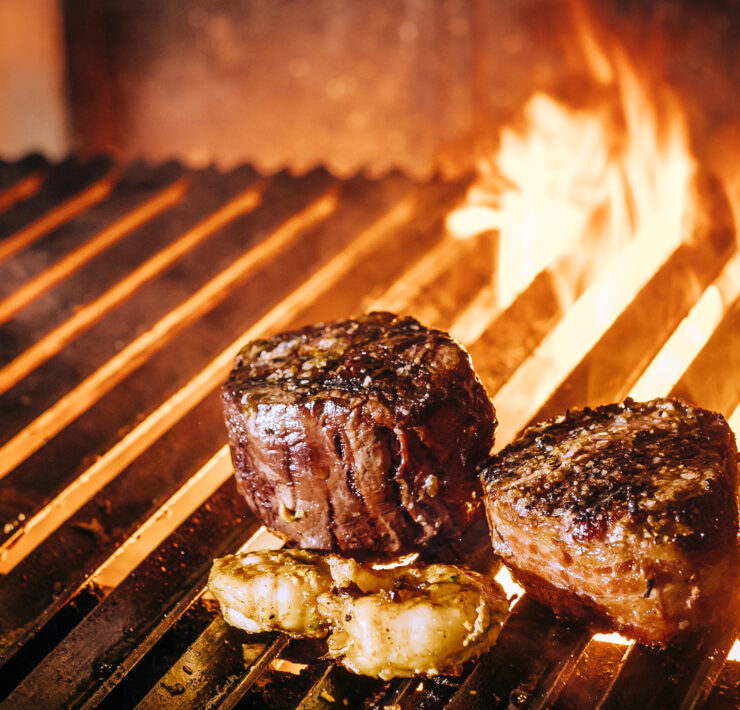One of Horseshoe Bay Resort’s most popular signature golf events returns Saturday, October 28 at 10 a.m. when four decorated professional golfers with a combined 17 wins on the PGA and LPGA Tours (including one major) face off in the Fifth Annual Shootout at Horseshoe Bay Resort on the private, award-winning Summit Rock course.
Exhibition Match
The 10-hole exhibition match will feature LPGA stars Gerina Mendoza and Angela Stanford and multiple-time winners from the PGA Tour, Bob Estes and Nick Watney, competing on Horseshoe Bay’s highly rated private Jack Nicklaus-designed Summit Rock course. Gallery members are welcome to take part in up-close viewing access at this unique event and will have a scenic walk on the dramatic, towering Summit Rock layout.
Playing along towering ridges overlooking Lake LBJ and plummeting through lush valleys and primitive limestone beds, this quintessential Texas Hill Country course is unquestionably the fifth star of The Shootout at Horseshoe Bay Resort and the upcoming episode of Golf Life TV that will be recorded during the event and aired all over the United States later this fall.
“The Shootout is a can’t-miss event for resort guests and members and the perfect weekend to play the Slick Rock, Apple Rock and Ram Rock courses then watch the pros take on each other the thrilling Summit Rock course,” says Horseshoe Bay Resort’s Golf General Manager Anthony Holder. “Seeing these players up close, you will gain a whole new appreciation for their talent and shot making. Make this the ultimate golf weekend and book your overnight stay for the Shootout weekend.”
2002 PGA Championship victor Rich Beem will play host along with Holder with Beem also taking part in the Golf Life TV coverage. This fifth edition of The Shootout at Horseshoe Bay Resort will be a 10-hole, two-team, match-play event, teeing off at 10 a.m., Saturday, Oct. 28. A Welcome Breakfast Reception will commence prior to the round on the Summit Rock driving range. All guests staying at Horseshoe Bay Resort that weekend will have access to watch all the live golf action on Summit Rock.
MORE on the players competing in the 2023 Shootout at Horseshoe Bay Resort:
ANGELA STANFORD
A native Texan and four-time All-American at TCU, Stanford has enjoyed success on the LPGA Tour since turning professional in 2000. She has collected eight professional victories, including a major win at the 2018 Evian Championship and played for the U.S. Solheim Cup team six times. Her most recent LPGA Tour victory came in her native Northern Texas region at the 2020 Volunteers of America Classic.
GERINA MENDOZA
Born in New Mexico and winner of the 2003 New Mexico state high school golf championship (while also competing as an All-State volleyball player), Gerina Mendoza has been a star in women’s golf since turning pro and rising to national prominence as a star of Golf Channel’s reality competition series The Big Break. Mendoza represented the U.S. at the Solheim Cup in 2013, 2015 and 2017. In 2016, she tied for 11th at the Rio Olympic Games and played for the victorious U.S. at the International Crown.
BOB ESTES
Having enjoyed uncommon longevity and playing success on the PGA Tour since turning pro in 1988, the former University of Texas All-American Estes made the cut in 446 of the 656 events he played on the PGA Tour. Estes won four PGA Tour events (with 10 career runner-up finishes) and amassed more than $21 million in career earnings. He has played in more than 100 events on the PGA Tour Champions with 10 top-five finishes and nearly $3 million in earnings.
NICK WATNEY
Northern California native and Fresno State University walk-on turned three-time All-American, Nick Watney has won five times on the PGA Tour and has ranked as high as ninth in the Official World Golf Rankings. His first PGA Tour win was at the 2007 Zurich Classic and his most recent came in 2012, at The Barclays. In 2010, Watney recorded top-10 finishes in both The Masters and the U.S. Open and he represented the United States at the 2011 Presidents Cup.
“The Shootout at Horseshoe Bay Resort – along with the Beer by the Bay Music Festival, our Wine, Dine & Jazz Festival and Balloons Over Horseshoe Bay Resort – is a cherished tradition for our resort guest and members as they make priceless memories and enjoy the unique and thrilling lifestyle amenities here,” said Bryan Woodward, Vice President, Operations for Crescent Hotels and Resorts.
THE ULTIMATE GOLF WEEKEND
To make it easy to enjoy The Shootout at Horseshoe Bay Resort, the property is offering a special UNLIMITED RTJ GOLF Package which includes complimentary admission to the golf event. The package also includes: Classic Guest Room, unlimited rounds of golf per adult from day of arrival through day of departure, $25 food & beverage credit per accommodation per night, one round on the Whitewater Putting Course per adult per night, and a 15% discount off full-priced retail items at the Slick Rock and Cap Rock Clubhouses. *based on availability. Certain restrictions apply.
The UNLIMITED RTJ GOLF Package can be booked by calling 855-441-1524 or online at HSBResort.com.
Horseshoe Bay’s Fifth Annual Shootout on the Horizon










